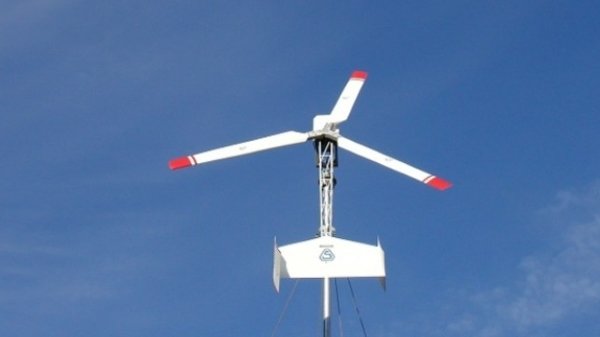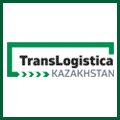
Several advances have occurred in mechanical power transfer technology with potential application in wind turbine powered boats, offering higher efficiency and extended service life. These advances are occurring simultaneously to developments in wind turbine technology that offer potential for higher efficiency and greater power output.
Introduction
The quest to reduce ship and vessel exhaust emissions involves a wide range of alternatives and includes developments in fuel technology, with some vessels even tapping into wind power. Several wind power technologies have been installed on ships and includes Flettner rotors, airborne kite sails, solid wing airfoil sails and telescopic airfoil sails that can extended upward far above the deck. These technologies function well when sailing at angle to the prevailing wind direction. Deck mounted windmills driving propellers have propelled vessels directly into a headwind, with kite powered propellers offering the possibility of comparable achievement.
Research and development has been underway involving various deck mounted wind power technologies. Up to the present time, a small number of windmill powered boats have sailed directly into headwinds and at greater speed that sail-powered vessels tacking the wind. While improvements are occurring in wind turbine technology that promises higher efficiency and greater power while driving boat propellers, kites that fly at high elevation and activate propellers are still subject to ongoing research.
90-Degree Gearless Drive
New developments have been occurring in gear and non-gear based mechanical power transfer technology, with potential application on wind turbine powered boats. Several companies offer flexible power couplings based on automotive-type universal joints. Their constant-velocity joint technology spun off from the automotive industry. Thompson Couplings of Australia offers a proprietary constant velocity joint system installed inside a casing that transfers power through an angle of 90-degrees. It provides an efficient connection between a deck-mounted vertical-axis turbine spinning at 200 RPM generating 6,000 NM (4,500 lb-ft) of torque and a conventional propeller that rotates on a horizontal axis, offering an expected service life of 75,000 hours, or transfer 9,000 Nm of torque at 135 RPM for 32,000 hours providing propulsion for a small boat.
While some small scale vertical-axis wind turbines will rotate at speeds of 60 RPM to 120 RPM, the typhoon capable vertical-axis turbines from Japan rotates at much lower speed, requiring a large low-RPM propeller to achieve propulsion in the absence of step-up gearing. In this regard, there may be scope to revive a classical 90 degree gearless power transfer system from the steam power era, the Almond Drive, that uses crankshafts and a slider to transfer power at low RPM. For modern application in wind-powered boats, the sliding component would need to be modified with roller bearings to reduce friction and extend service life.
Roller Gears
While the American automotive sector developed the low-friction worm-and-roller steering mechanism, Asian companies have developed reduction gears based on that concept. Their design replaces gear teeth with rollers installed around the circumference of the main gear, with hourglass shaped worm gears meshing with the rollers to allow for a low gear ratio while greatly reducing friction. Like the steering gear, the roller gear is reversible where power may be applied to the main roller gear with the worm gears delivering power at much greater rotational speed.
A vertical-axis wind turbine could drive the roller gear, with a pair hourglass worm gears installed to rotate on a lengthwise horizontal-axis and driving a pair of counter-rotating propellers. While worm with roller gears have been built for low power applications, there appears scope to build such gears at much greater scale and capable of transferring high levels of power. The low friction between worm gear and roller reduces power loss while offering greatly extended useable service life.
Higher Power
A vertical-axis turbine rotating at 60 RPM and generating 1,000 kW or 1350 HP would deliver 116,200 lb-ft or 158,000 Nm of torque. Recent developments in vertical-axis wind turbine technology offers higher conversion efficiency than early generation versions, with future power output levels likely approaching or exceeding 4,000kW. However, large vertical-axis wind turbines could spin as slowly as 12 RPM, with torque levels rising above 785,000 Nm of torque. VOITH builds mechanical power transfer technology that includes specialized gears, drive-shafts and extreme sizes of automotive-type universal joints. They invite designers of wind turbine powered vessels to contact them to discuss power transmission options.
Some of the largest present day three-blade horizontal-axis wind turbines rotate as slowly as 12 RPM driving through planetary step-up gears to increase shaft rotational speed of the electrical generator. It is unlikely that 90-degree bevel gears could transfer torque exceeding 1,000,000 Nm for extended durations exceeding 5,000-hours. VOITH offers universal joint couplings capable of operating at 15 degrees, with the option of linking several such couplings installed inside a series of casings to achieve higher angles of power transfer. They build lightweight drive-shafts capable of carrying extreme torque loads that would likely find application in future wind powered ships.
Vertical-axis Propulsion
VOITH builds vertical-axis propulsion units that are installed in counter-rotating pairs under the hulls of tug boats. A vertical-axis wind turbine could drive the middle crankshaft inside a tension-rod transfer box, with one of the output crankshafts been driven via the combination of tension rods and roller sliders. The result would be a pair of counter-rotating crankshafts driving vertical shafts that would drive VOITH counter-rotating vertical-axis propulsion units. The equivalent of a mega-size gear pump installed inside a casing would represent an alternative vertical-axis propulsion technology driven by counter-rotating shafts and involving less complexity than the VOITH system.
The outlet of the gear pump casing could involve less cross-sectional area than the inlet, effectively accelerating the water flow speed in the manner of a water jet and achieving a comparable result of using planetary gearing to operate a propeller at higher RPM than the vertical-axis turbine. A mega-size gear pump would require a grating at the inlet to keep out ocean life and require rudders at the outlet. The use of gear pump based propulsion would likely avoid the problem of propeller cavitation while offering a measure of protection against wind turbine over-speeding in powerful wind conditions.
Horizontal-axis Turbines
The now classical three-bladed horizontal-axis wind turbine has been installed on mast-like towers that extend upward from the deck of a boat and driven propellers via an electrical transmission. The alternative mechanical power transmission involves bevel gearing and counter-rotating concentric shafts installed inside the mast-tower, a layout generally suitable for small vessels that sail short distances. Bevel gearing generally incurs higher friction losses than parallel gearing and there is an upper weight limit to the gearing that can be installed atop a mast-tower, in turn restricting the amount of torque produced by the turbine.
Large three-bladed turbines of one-MW output can generally transmit over 230,000 lb-ft (315,000 Nm) of torque at 30 RPM while even larger turbines rotate as slowly as 15 RPM producing over 1,000,000 Nm of torque. The high cost of manufacturing special gears, rapid wear and requirement for frequent gear replacement detracts from the attractiveness of using three-bladed turbines driving through mechanical gears. The high cost of electrical generator and motors and their lower part-load efficiency contribute to making the three-bladed turbine less attractive. Recent developments in vertical-axis wind turbine technology increases competitiveness against horizontal-axis wind turbines.
Conclusions
New developments are occurring in large-vessel wind power technology, with potential for modern wind power technology to serve as the primary source of vessel propulsion along select routes. Powerful winds begin to blow across the North Atlantic after early September, enhancing prospects to make greater use of wind-driven vessel propulsion. Advances have occurred in wing-based sail technology and Flettner rotors have been installed on the deck of some ships to reduce fuel consumption.
Recent developments in vertical-axis wind turbine technology increases competitiveness against horizontal-axis 3-bladed wind turbines and enhances prospects of such turbines being applied to vessel propulsion, driving through mechanical power transmission. The gearless variants offer the prospect of greater reliability when sailing over extended distances across ocean, including on both small passenger vessels and large commercial freight carriers.
The opinions expressed herein are the author's and not necessarily those of The Maritime Executive.
Source www.maritime-executive.com




.jpg)






